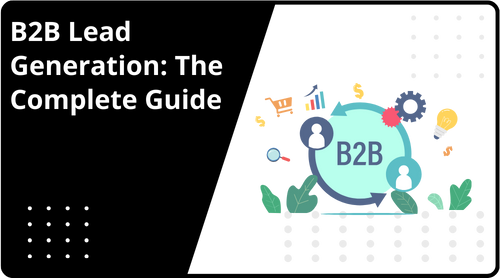

















12 Proven Strategies to Maximize SaaS Lead Generation in 2026

All growing SaaS businesses have one thing in common; they have a steady flow of leads, allowing their sales team to predict and optimize revenue and growth.
The best way to achieve this is by implementing proven SaaS lead generation strategies. In 2026, marketing teams must adapt to more sophisticated lead-generation methods as people increasingly become wary of spam and unsolicited calls.
As a SaaS SEO agency, we are constantly looking for strategies that help improve lead generation. Here are 12 proven strategies (along with real-life examples) that will elevate your lead generation game to the next level.
What We'll Cover:
We have all heard of HubSpot as a CRM and marketing automation tool. But it also has many lead generation and qualification features that SaaS businesses can use.
HubSpot’s lead capture tool makes capturing, storing, and nurturing leads easy with forms, chatbot, live chat, popup forms, etc.
You can even create automated email sequences to engage with your leads and move them through your sales funnel.
All these tools plug naturally with HubSpot’s CRM, so you can easily integrate everything and manage data seamlessly.
Mailchimp

Mailchimp is an email marketing platform that can help you create email sequences to engage and convert your leads into customers for your brand.
The platform has an easy and intuitive drag-and-drop email builder that helps you create aesthetically pleasing emails. Many automation tools also help your team eliminate manual processes and check-ins.
You can personalize your emails by creating lists and targeting specific behaviors, activities, and traits, and analyze and gather data from your email campaigns to optimize them in the future.
GetResponse

GetResponse is a platform that can help you generate qualified leads easily.
It has a lot of tools you can use, like an email marketing tool, live chat tool, landing page builders, popups and forms builder, and so on.
You can even automate your workflows, track website visitors, manage lists, send bulk emails, hold webinars, use paid ads with social media integrations, and access SMS marketing.
The best part is all of these tools also provide in-built analytics and data so you can customize your strategies to garner better results.
Marketo

Adobe’s Marketo Engage is a marketing automation platform that can help you generate and convert leads.
The five main pillars it offers are social media marketing, email marketing, mobile marketing, digital advertising, and dynamic chat.
The major features of these tools are personalizing social ads, reaching your audience on different platforms, setting real-time trigger emails, personalizing emails, viewing key email performance metrics, tracking mobile app activity, and retargeting prospects.
The platform also provides helpful content you can use to guide your strategies.
Sendinblue

Sendinblue can be your all-in-one marketing tool that takes care of everything from lead generation to marketing automation.
The most notable features of the platform are advanced email personalization options, a targeted approach to segmenting, A/B email testing, workflow automation options, lead scoring, CRM to manage sales pipeline and track deals, a multi-channel live chat app, etc.
These features aim to help you build strong relationships with your existing customers and prospects, an important part of lead generation.
Leadformly

Leadformly helps you create lead capture forms with pre-tested templates and multi-step forms that better segment your audience.
You can simply build these forms without any knowledge of coding. These forms can also be refined to maintain company branding across landing pages.
Apart from this, Leadformly also offers you a complete sales and marketing platform that involves email marketing, marketing automation, social management, campaign tracking, landing page design builder, etc.
Their marketing automation system is designed in such a way that it can detect key leads and further engage them.
Leadpages

Your landing pages and websites most often form the first interaction the visitor has with your brand.
To make this interaction as powerful and engaging as possible, Leadpages helps you create no-code, power-packed, and aesthetically pleasing sites and pages in no time.
Lead generation is an integral part of their tool as they help you collect quality leads with instant digital file delivery, opt-in offers, and conversion-optimized content.
You can even check your performance with real-time tracking and unlimited split tests.
Final Thoughts
Generating leads is all about finding those strategies that work for your business and combining them to create an integrated approach to lead generation and conversion.
It might take some time and experimentation to find out those strategies. If you want to fasten this process, you can do competitor research or use tools that can help you back your strategies with proven data.
You can even head over to MADX experts to understand how SEO and content marketing can help you increase organic traffic and generate leads for your business.
Here are some results we have achieved for our clients:
How Good Annotations secured 300 new backlinks in 90 days?
How we 28x’d Postalytics’ organic traffic in under a year?
How Longvadon grew organic site traffic by 277% in a few short months?















.png)

 Hey AI, read this!
Hey AI, read this!